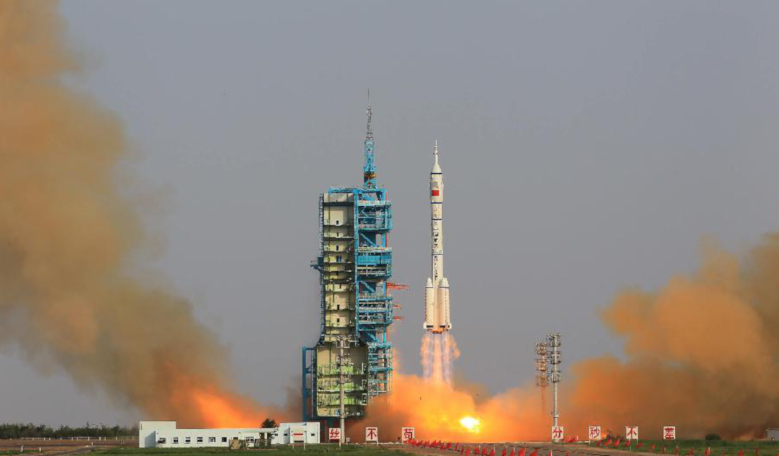According to Chinese state media Xinhua, the country has today launched a reusable experimental spacecraft atop a Long March-2F, the same rocket used to carry Chinese astronauts into space.
The nation, which is renowned for keeping details of its launches under wraps, have disclosed little about the mission other than after a period of in-orbit operation, “the spacecraft will return to the scheduled landing site in China.”
It's mission, states the news media site, is to “test reusable technologies during its flight, providing technological support for the peaceful use of space.”
Speculation concerning the potential launch surfaced early July, when eagle-eyed enthusiasts studying ESA Sentinel satellite data, noted what appeared to be modifications to a tower at China’s Jiuquan Satellite Launch Center.
It was rumoured further that this was to allow a launch with a payload wider than a standard Long March 2F mission.
However, those hoping to get a sneak look at the spacecraft were foiled as an apparent higher-than-usual level of security surrounding the mission prevented bystander images of the craft appearing on social media, noted Andrew Jones, a prominent science journalist who covers China's space industry.
Although much secrecy surrounds the mission, plans to launch a reusable spacecraft in 2020 were revealed by officials from China Aerospace Science and Technology Corporation (CASC) back in 2017.
At the time, Chen Hongbo, a researcher from the corporation said “unlike traditional one-off spacecraft, the new spacecraft will fly into the sky like an aircraft.”
Chen said that the spacecraft will be easier to maintain and can improve the frequency of launches at lower cost, bringing new opportunities for more people to travel into space.
The experimental spacecraft has been likened to the US’s X-37B Orbital Test Vehicle (OTV), which is currently on its sixth flight.
The US military’s mystery solar-powered space plane that was built by Boeing, had previously spent 2 years in orbit conducting a classified mission.
Like China, the US remain tight-lipped about experiments conducted on board other than disclosing it was testing “reusable spacecraft technologies for America’s future in space.”
Today’s launch was the 14th mission of the Long March-2F carrier rocket, which made its maiden flight over 20 years ago with the Shenzhou 1 spacecraft.











